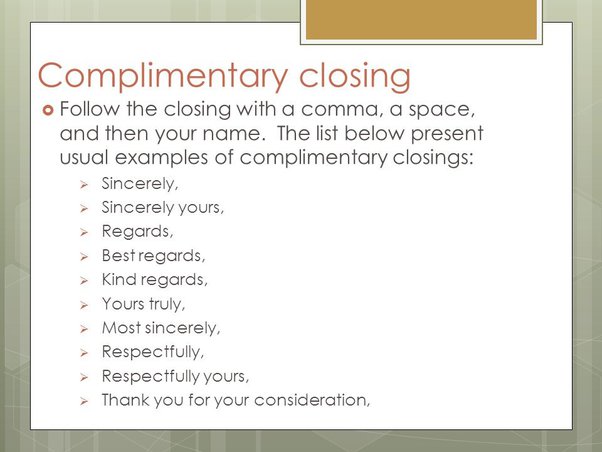
Salutations and closings
Salutations and closings are essential elements of email etiquette, especially in a business context. They set the tone for your message and can affect how your email is received. Here’s a guide to some common and effective salutations and closings:
Salutations
-
Formal
- Dear [Name],
- Dear Mr./Ms. [Last Name],
- To [Title/Position],
- Greetings,
-
Semi-Formal
- Hello [Name],
- Hi [Name],
- Good [Morning/Afternoon/Evening] [Name],
-
Informal (Use only if you have an established relationship)
- Hi [First Name],
- Hey [First Name],
When addressing someone whose name you don’t know, you can use:
- Dear Sir/Madam,
- To Whom It May Concern,
- Dear [Job Title/Department],
Closings
-
Formal
- Sincerely,
- Regards,
- Best Regards,
- Respectfully,
- Yours Faithfully, (especially if you don’t know the recipient’s name)
- Yours Sincerely, (if you know the recipient’s name)
-
Semi-Formal
- Best,
- Kind Regards,
- Thanks and Regards,
- Warm Regards,
-
Informal (Again, use only with people you know well)
- Cheers,
- Thanks,
- Best Wishes,
- Warmly,
Tips for Salutations and Closings
- Match the Tone: Ensure that your salutation and closing match the tone and level of formality of your email body and your relationship with the recipient.
- Cultural Sensitivity: Be aware of cultural differences in salutations and closings. What is considered formal or polite in one culture may not be in another.
- Consistency: If you start with a formal salutation, end with a formal closing. The same goes for semi-formal and informal styles.
- Professionalism: In a business context, it’s usually better to err on the side of formality, especially if you’re unsure about the appropriate level of familiarity.
- Avoid Overused Phrases: Phrases like “To whom it may concern” can come across as outdated or impersonal. Try to personalize your salutation as much as possible.
Remember, the right salutation and closing can make a significant difference in how your message is perceived and can contribute to building and maintaining professional relationships.